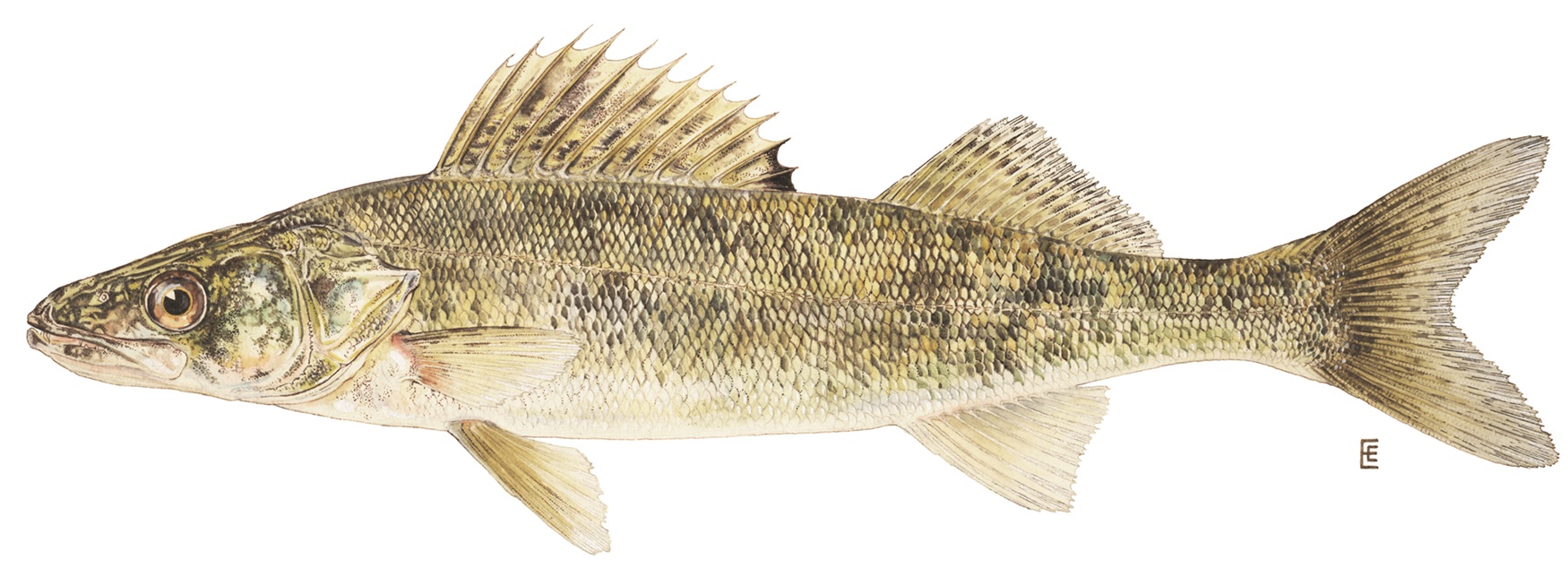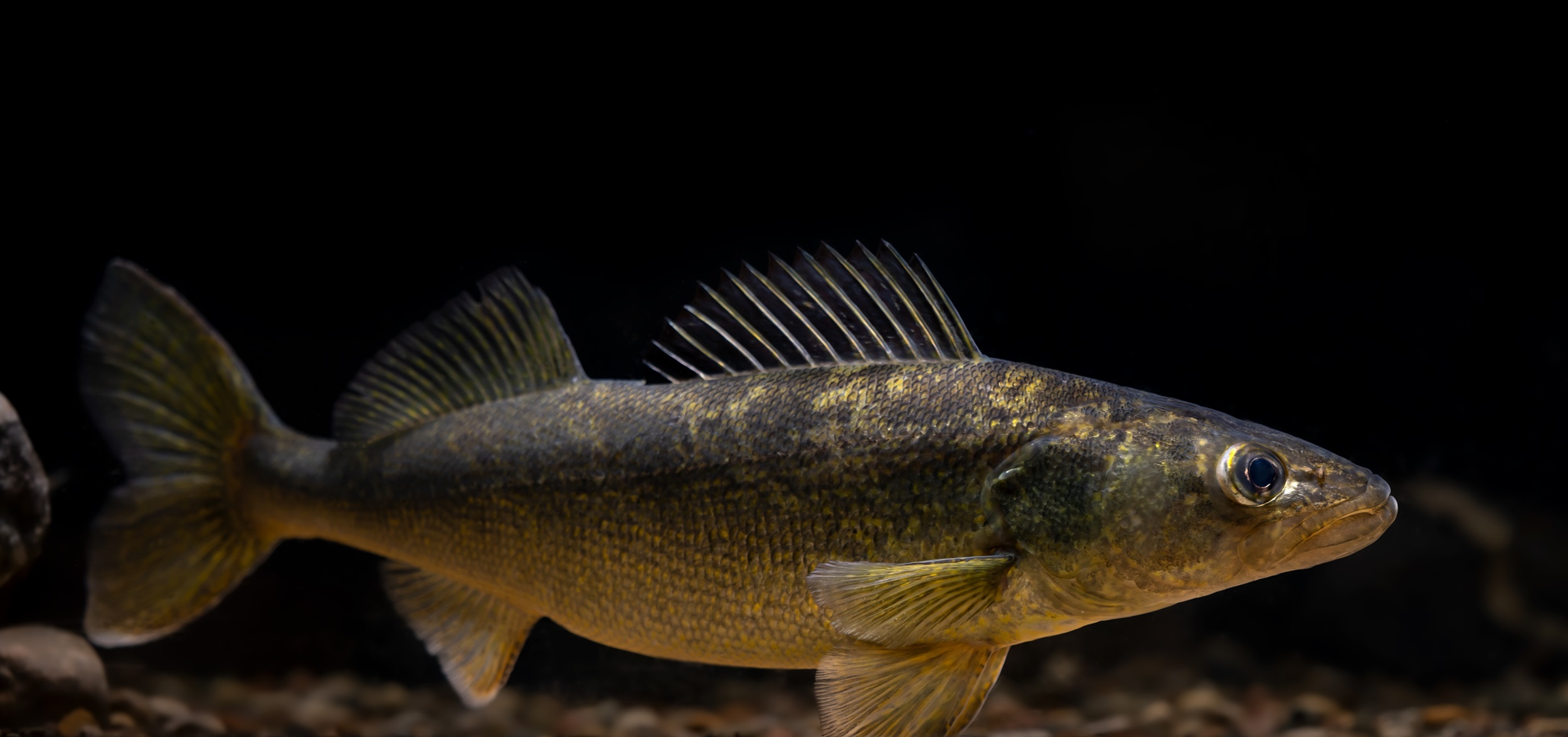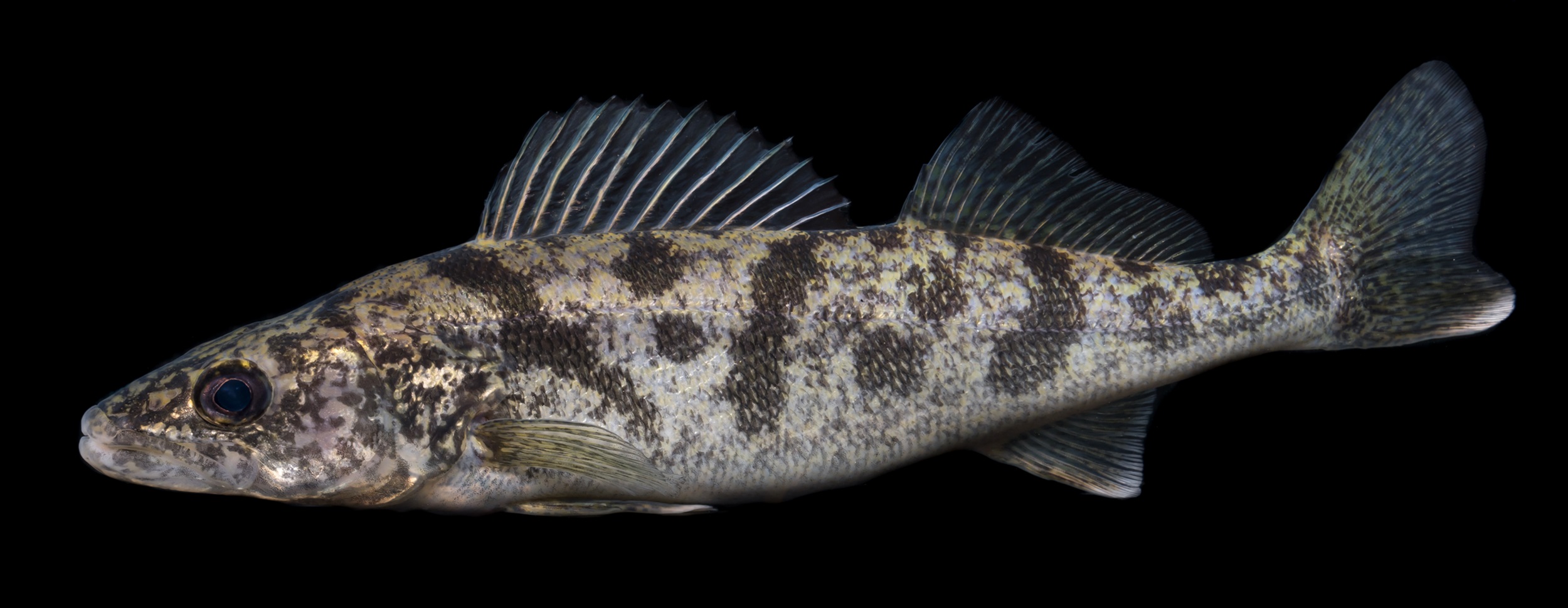The walleye (Sander vitreus) is a moderately large, predatory freshwater fish of the family Percidae (order Perciformes). Other common names include yellow walleye, pickerel, yellow pickerel, pikeperch, doré or doré jaune. Walleyes should not be confused with true pickerels, family Esocidae.

Description
Walleyes have a bluntly pointed head, a mouth well armed with teeth and two dorsal fins (the first with sharp spines, the second without). Their eyes are specially adapted to low light intensities. Walleyes are bright golden to brownish green, with darker markings; the lower tip of the caudal fin is milk white.

Distribution and Habitat
Walleye occur in fresh waters from the mouth of the Mackenzie River to near the Gulf of Mexico. In Canada, they are found from southern Quebec to northeastern British Columbia.
Walleye favour the cool waters of lakes and streams. They are also regularly found in dense aquatic vegetation or deeper waters, especially during the day.

Diet
Walleyes are adapted to prey on other fishes. They are considered voracious feeders and will eat leeches, crustaceans, frogs and molluscs, in addition to other fish. They typically hunt near the bottom of the body of water.
Significance of Fishery
Walleye is probably the most economically important species of fish in Canada's inland waters, being prized in summer and winter for its meat. The closely related sauger (Stizostedion canadense) is somewhat smaller and has a more restricted range (Quebec to Alberta). It is also a popular sport fish.

 Share on Facebook
Share on Facebook Share on X
Share on X Share by Email
Share by Email Share on Google Classroom
Share on Google Classroom




